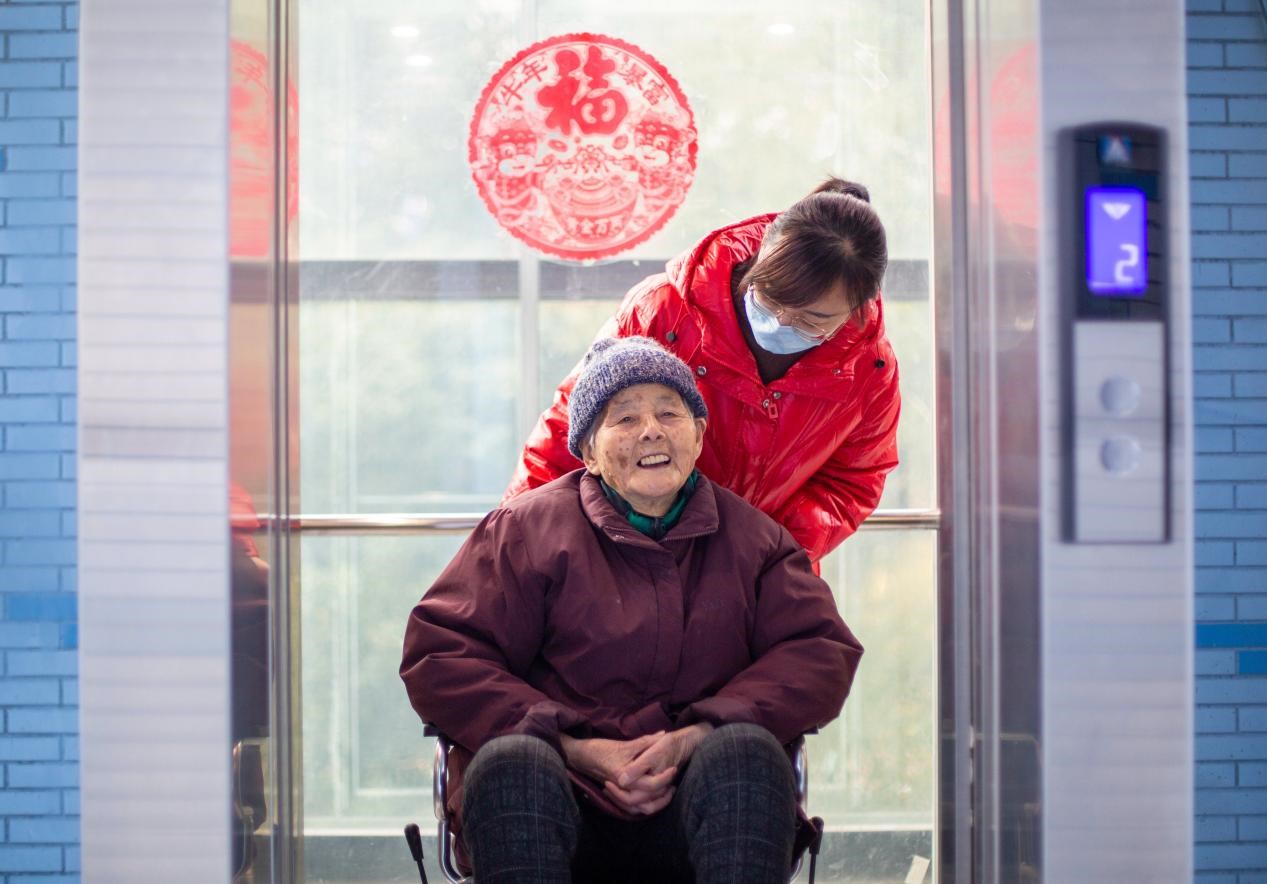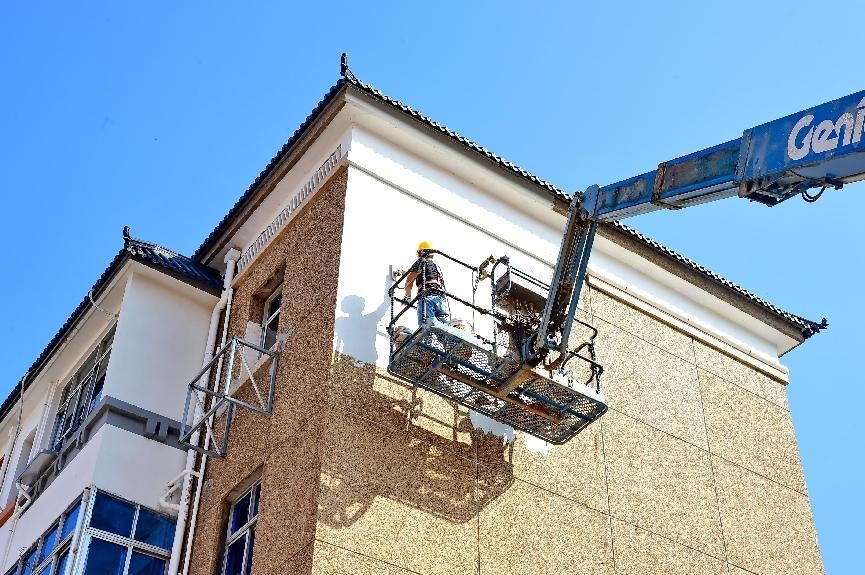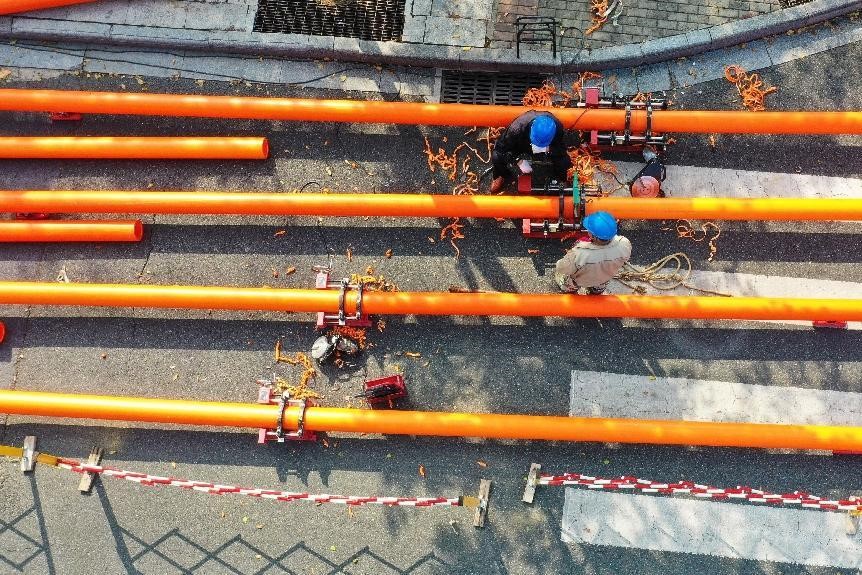Chinese residents embrace better life thanks to renovation of urban residential areas
The renovation of old urban residential areas is benefiting more and more urban residents in China. According to statistics, 114,000 old residential communities across the country kicked off renovation programs between 2019 and 2021, involving more than 20 million households.

A senior resident takes a newly installed elevator in an old residential community in Hai’an, east China’s Jiangsu province, Dec. 14, 2021. (People’s Daily Online/Zhai Huiyong)
China will basically complete the construction of an institutional framework, a policy system and a work mechanism for the renovation of old urban residential areas by 2022, and strive to finish the rebuilding of all communities built before the end of 2000 that need to be renovated by the end of the 14th Five-Year Plan period, or 2025, says guidelines released by the State Council in 2020.
In 2019, Shihezi city of northwest China’s Xinjiang Uygur autonomous region launched a citywide renovation program for old urban residential areas. By the end of the last year, 22 old residential communities in the city had finished renovation, and 28 had completed renovation of specific items. The citywide renovation program will benefit 167,000 households when fully completed.

A worker is painting the outer wall of an old residential building in Chengnan neighborhood, Ganxian district, Ganzhou, east China’s Jiangxi province, Nov. 19, 2021. (People’s Daily Online/Zhu Haipeng)
According to Liu Fen, a citizen in Shihezi, the roads in the residential community she lives in have become wider after renovation, and illegal structures have been demolished. Besides, outer walls of residential buildings are painted in bright colors and elevators have been installed in the buildings, she said, adding that there are also small parks and leisure centers near her community now.
Her son, who works out of town, almost got lost in the renovated residential community when he returned home, the woman said.
The renovation of old urban residential areas includes not only infrastructure rebuilding, but also other sections that make residential communities more functional, such as expansion of parking space, installation of elevators, and construction of sports, elderly care, and childcare facilities.
The ultimate goal of the renovation is to improve the life quality of residents. Therefore, whether residents are satisfied matters.
To involve residents more in the renovation programs, Heze in east China’s Shandong province improved its renovation plans based on the opinions they solicited from the public; Shijiazhuang, north China’s Hebei province requests that renovation projects can be delivered only when 80 percent of residents are satisfied with them; in Beijing, renovation is carried out based on household surveys to ensure individualized plans for every household.

Photo taken on Dec. 10, 2021 shows the Ruyi Shanzhuang residential community in Dong’an county, central China’s Hunan province. The living environment in the community has been greatly improved after renovation programs had been launched to upgrade its sewage pipelines, roads, fire-fighting equipment, and greening design. (People’s Daily Online/ Yan Jie)
The renovation of old urban residential areas has not only offered more sense of happiness for residents, but also generated a number of replicable cases and experiences.
China plans to launch renovation projects in 51,000 urban residential communities this year that cover 8.4 million households. In the first five months, 53.5 percent of the task has been completed. A total of 27,400 urban residential communities kicked off renovation projects, involving 4.74 million households.
The government work report this year said that China will proceed with urban renewal in a well-conceived way. The country will step up construction of public utilities and bolster capacities to prevent and mitigate natural disasters; identify and address safety hazards in old buildings and facilities; renovate another group of old residential communities in urban areas and support the installation of elevators in old residential buildings; and promote the development of barrier-free environments and renovation of public facilities for the convenience of senior citizens.
This year, the Ministry of Finance allocated special funds of 30.7 billion yuan, 22.41 billion yuan and 10 billion yuan to promote the progress of old residential areas renovation, affordable rental housing, and shanty town renovation, respectively.
More and more residents are embracing a more convenient and comfortable life thanks to the on-going renovation of old urban residential areas.

Communication cables are being installed near a residential complex in Sihong county, Suqian, east China’s Jiangsu province, Oct. 29, 2021. (People’s Daily Online/ Xu Changliang)
Photos
Related Stories
- China's urban public transport surges in 2021
- China exceeds five-year target in renovating rundown urban areas
- China makes steady progress to renovate rundown urban areas
- China exceeds 2018 annual housing renovation target
- New economy changes young urban people's lifestyles
- China's urban unemployment rate at 4.04 pct
- China plans to renovate 6 mln run-down houses in 2016
- Conference on Urban Development Lays out Solutions for China's Urban Problems
- China identifies livable cities as priority
- China aims to complete shantytown renovation by 2020
Copyright © 2022 People's Daily Online. All Rights Reserved.









